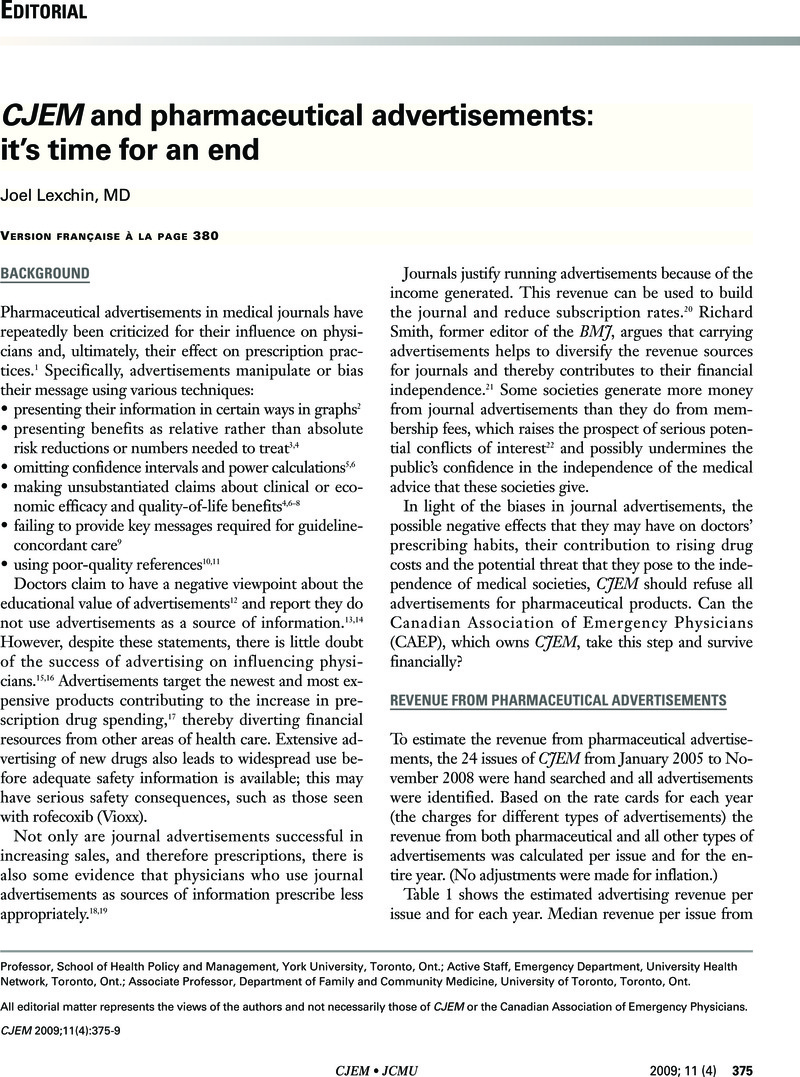Crossref Citations
This article has been cited by the following publications. This list is generated based on data provided by Crossref.
Ryan, Christopher
Walter, Garry
and
Robertson, Michael
2010.
College Activities and the Ethics of Advertising.
Australasian Psychiatry,
Vol. 18,
Issue. 2,
p.
101.
Evans, Chris
2010.
Cjem And Pharmaceutical Advertisements.
CJEM,
Vol. 12,
Issue. 01,
p.
5.
Lexchin, Joel
2011.
Ban Drug Advertisements.
CJEM,
Vol. 13,
Issue. 05,
p.
297.
Gettings, Jennifer
O'Neill, Braden
Chokshi, Dave A.
Colbert, James A.
Gill, Peter
Lebovic, Gerald
Lexchin, Joel
Persaud, Navindra
and
Havemann, Frank
2014.
Differences in the Volume of Pharmaceutical Advertisements between Print General Medical Journals.
PLoS ONE,
Vol. 9,
Issue. 1,
p.
e84790.
Stros, Michael
and
Lee, Nick
2015.
Marketing dimensions in the prescription pharmaceutical industry: a systematic literature review.
Journal of Strategic Marketing,
Vol. 23,
Issue. 4,
p.
318.



